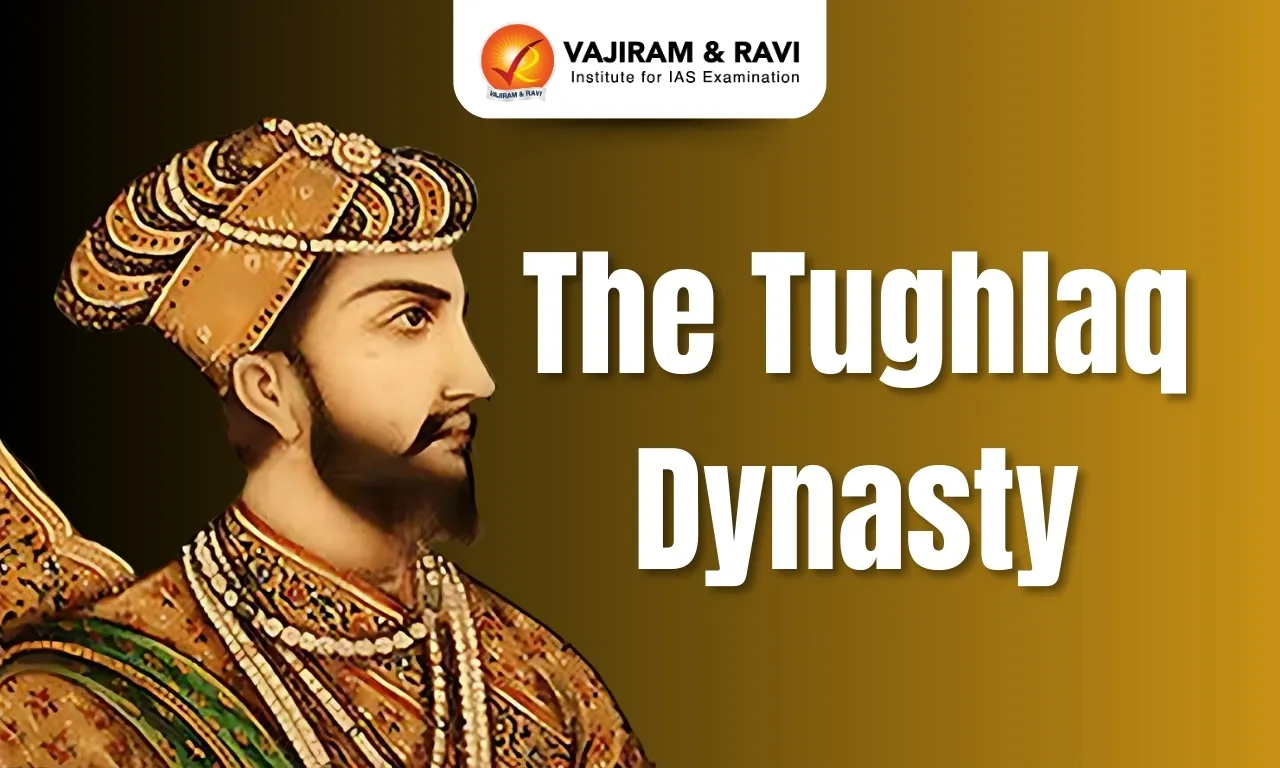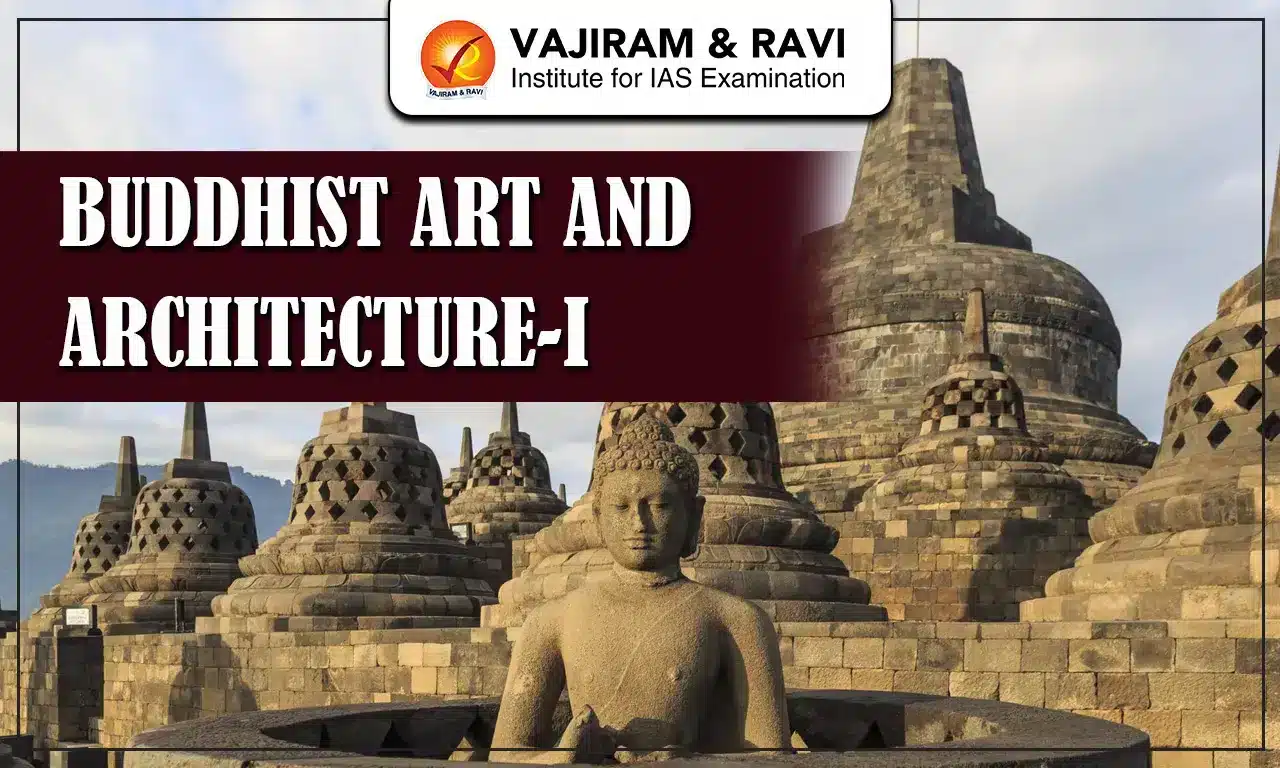Emergence of the Tughlaq dynasty
- Chaos within the Khilji dynasty: Ala-ud-din nominated his eldest son Khizr Khan, as his successor. However, Malik Kafur himself assumed the authority of the government. But soon, he was assassinated by hostile nobles; after that, there were a series of murders.
- End of Khilji dynasty: Ghazi Malik (Turkish noble of the Delhi Sultanate) murdered the incumbent Khilji ruler Khusrau Khan, preventing anyone from the Khilji dynasty from claiming the throne.
- Beginning of Tughlaq dynasty: Ghazi Malik ascended the throne of Delhi in 1320 as Ghiyas-ud-din Tughlaq. He assumed the title of Sultan and established the Tughlaq dynasty.
- Ghiyasuddin Tughlaq was succeeded by his son, Muhammad bin Tughlaq, who is considered the most prominent ruler of the dynasty.
- Under the Tughlaqs, the Delhi Sultanate was further consolidated. Many outlying territories were brought under the direct control of the Sultanate.
- Source of information: Tarikh (singular) / Tawarikh (plural), meaning a collection of histories; written in Persian.
Major rulers of the Tughlaq Dynasty
Tughlaq Dynasty Map
| Tuglaq Dynasty- Rulers and Contributions | ||||||||||||||||||||
| Period: 1320-1414 AD | Capital: Delhi | |||||||||||||||||||
|
||||||||||||||||||||
|
Ghiyasuddin Tuglaq (1320-1325) |
|
|||||||||||||||||||
|
Mohammad Bin Tuglaq (1325-1351) |
|
|||||||||||||||||||
|
Firoz Shah Tughlaq (1351-1388) |
|
|||||||||||||||||||
|
Image of Tughlaqabad Fort Image of Firoz Shah Kotla Image of Tughlaqabad— The Tomb of Shah Rukn-e-Alam |
Contribution of Tughlaq Dynasty to Art and Architecture: | |||||||||||||||||||
Indo-Islamic Architecture: They incorporated elements from various architectural styles, such as Persian, Central Asian, and Indian, to create distinctive structures.
|
||||||||||||||||||||
|
Literature:
|
||||||||||||||||||||
Administration
The administration of the Tughlaq dynasty was centralised and hierarchical. The sultan was the supreme authority, and a council of ministers assisted him.
The Tughlaqs' administration was efficient and effective, and it helped consolidate the Delhi Sultanate's power. However, the dynasty's centralised and hierarchical system also made it vulnerable to revolts and rebellions.
- Centralised and hierarchical system: The Tughlaq administration was centralised and hierarchical, with the sultan at the top of the system. The Sultan was assisted by a council of ministers responsible for overseeing the different government departments.
- Iqta system:
- Shamsa ud-din Iltutmish, the second sultan of the Delhi Sultanate, is credited with introducing the Iqta system in India.
- The Iqta system was a land revenue system that granted the right to collect revenue from a specific area of land to a military officer or noble in exchange for military service or other duties to the Sultan.
- The Iqta system was introduced in the 13th century and was used by the Delhi Sultanate until the 16th century.
- The Iqta system was a significant development in the history of the Delhi Sultanate and helped to create a strong military force and to provide the Sultan with a reliable source of revenue.
- Efficient and effective: The Tughlaq administration was efficient and effective, and it helped to consolidate the power of the Delhi Sultanate.
- Vulnerable to revolts and rebellions: The Tughlaqs' centralised and hierarchical system also made it vulnerable to revolts and rebellions.
Society and Religion
Society
- Social Structure: The society during the Tughlaq Dynasty was characterised by a hierarchical structure. The ruling elite, including the sultan and nobles, held significant power and wealth. The middle class comprised merchants, traders, and professionals, while the majority of the population consisted of farmers, artisans, and labourers.
- Cultural Synthesis: This phase synthesised Indian and Islamic cultures. While Islam was the dominant religion of the ruling elite, the majority of the population practised Hinduism.
Religion
- Islam as State Religion: The ruling elite, including the sultans, were Muslims, and Islamic principles and laws influenced the administration. Mosques and madrasas (Islamic educational institutions) were established, promoting the spread of Islam.
- Religious Tolerance: Despite Islam being the state religion, the Tughlaq Dynasty displayed a degree of religious tolerance. Hindus and other religious communities were allowed to practise their faith.
- Sufism: Sufism, a mystical form of Islam, gained prominence during the Tughlaq Dynasty. Many Sufi saints and orders, such as the Chishti and Suhrawardi, emerged during this period.
- Hindu-Muslim Interactions: Cultural exchanges, trade relationships, and intermarriages between Hindus and Muslims contributed to a syncretic cultural milieu.
Economy
- Agrarian Economy: Agriculture formed the backbone of the economy during the Tughlaq Dynasty. Most of the population was engaged in agricultural activities, and revenue from agricultural land was the state's primary income source.
- Land Revenue Reforms: Sultan Muhammad bin Tughlaq introduced several land revenue reforms to increase state revenue and streamline taxation.
- Trade and Commerce: Delhi Emerged as a major commercial centre, attracting merchants and traders from different regions. The Sultans established markets and trade networks, fostering economic growth and encouraging regional and international trade.
- Coinage and Currency: Sultan Muhammad bin Tughlaq's ill-fated attempt to introduce token currency resulted in confusion and economic turmoil.
- Infrastructure Projects: The Tughlaq sultans initiated several ambitious infrastructure projects aimed at improving transportation and connectivity. They also undertook ambitious infrastructure projects, including the construction of canals, dams, and reservoirs for irrigation purposes.
- Impact of Political Instability: The Tughlaq Dynasty witnessed political instability and frequent revolts, which had a negative impact on the economy.
- For example, The sultans' policies, such as the forced shifting of the capital from Delhi to Daulatabad, led to disruptions in trade, agriculture, and overall economic stability disruptions.
- Decline in Economic Prosperity: The impact of political instability, unsuccessful policies, and social unrest contributed to economic stagnation and decline during latter rulers.
Decline of Tughlaq Dynasty
It was challenging to control distant provinces like Bengal from Delhi, and soon after annexing southern India, the entire region became independent.
- The political control of Delhi gradually weakened during the rule of Firuz’s successors.
- The last Sultan was Nasrudin Muhammad. During his reign, northern India fell victim to the fury of Amir Timur (Turkish). The invasion of Timur in AD 1398 left the sultanate desolate.
- By the end of Tughlaq rule (AD 1412), the Sultanate was confined to a small territory in north India.
- A number of regions proclaimed independent status.
- In the east, Bengal and Orissa enjoyed complete autonomy.
- In eastern UP and large parts of Bihar, a new independent kingdom of Sharqis emerged.
- In the Deccan and South Vijaynagar empires and Bahmani kingdom became political powers.
- Independent nobles occupied large parts of Punjab. Gujarat and Malwa became fully independent.
Rajput states in Rajasthan no longer treated Delhi Sultans as their overlords.
Last updated on January, 2026
→ Check out the latest UPSC Syllabus 2026 here.
→ Join Vajiram & Ravi’s Interview Guidance Programme for expert help to crack your final UPSC stage.
→ UPSC Mains Result 2025 is now out.
→ UPSC Notification 2026 Postponed for CSE & IFS which was scheduled to be released on 14 January 2026.
→ UPSC Calendar 2026 has been released.
→ UPSC Prelims 2026 will be conducted on 24th May, 2026 & UPSC Mains 2026 will be conducted on 21st August 2026.
→ The UPSC Selection Process is of 3 stages-Prelims, Mains and Interview.
→ Prepare effectively with Vajiram & Ravi’s UPSC Prelims Test Series 2026 featuring full-length mock tests, detailed solutions, and performance analysis.
→ Enroll in Vajiram & Ravi’s UPSC Mains Test Series 2026 for structured answer writing practice, expert evaluation, and exam-oriented feedback.
→ Join Vajiram & Ravi’s Best UPSC Mentorship Program for personalized guidance, strategy planning, and one-to-one support from experienced mentors.
→ UPSC Result 2024 is released with latest UPSC Marksheet 2024. Check Now!
→ UPSC Toppers List 2024 is released now. Shakti Dubey is UPSC AIR 1 2024 Topper.
→ Also check Best UPSC Coaching in India
The Tughlaq Dynasty FAQs
Q1. What is the Jizya tax? +
Q2. Which was the oldest among the seven cities of Delhi?+
Tags: quest the tughlaq dynasty

















